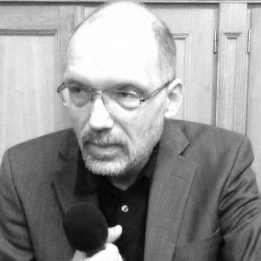Poland has fallen to its lowest ever position, 66th out of 180 countries, in the World Press Freedom Index. The result marks a fall of two places from last year’s ranking and is the seventh year running that Poland’s position has declined from its highest ever position of 18th in 2015.
Reporters Without Borders, the NGO that compiles the index, classifies the situation in Poland as “problematic”, describing the country as an “illiberal democracy” where intense media polarisation is fuelled by suppression of independent journalism as the government has consolidated its control over public broadcasting and pursued a strategy of “re-Polonising” privately owned media.
#RSFIndex: RSF unveils its 2022 World #PressFreedom Index
1: Norway🇳🇴
2: Denmark🇩🇰
3: Sweden🇸🇪16: Germany🇩🇪
24: UK🇬🇧
26: France🇫🇷
42: USA🇺🇸
58: Italy🇮🇹
71: Japan🇯🇵
110: Brazil🇧🇷
134: Algeria🇩🇿
150: India🇮🇳178: Iran🇮🇷
179: Eritrea🇪🇷
180: North Korea🇰🇵https://t.co/fdZ3RWSFjN pic.twitter.com/rV2i3sPmwW— RSF (@RSF_inter) May 3, 2022
The media polarisation seen in Poland, RSF note, is part of a wider global trend – “a new era of polarisation” – that also includes polarisation between countries. Poland’s latest fall in the ranking sees it placed directly below Mauritius (64th) and Cyprus (65th) and above Bosnia-Herzegovina (67th) and Ecuador (68th).
Norway, Denmark and Sweden again take the top positions, followed by Estonia, which has climbed 11 places since 2021. Germany continues to fall, down to 16th, while the Czech Republic and Lithuania rise 20 and 19 places, to 20th and 9th places respectively. Hungary is in 85th position, Ukraine 106th, Belarus 153rd, and Russia 155th.
“While Poland has a diverse media landscape, public awareness of press freedom remains weak,” RSF found. “After turning the public media into instruments of propaganda, the government has multiplied its attempts to change the editorial line of private media and control information on sensitive subjects.”
The private market remains mostly pluralistic, with several influential independent media outlets, including television network TVN, news portal Onet and newspaper Gazeta Wyborcza, RSF note. The public media, however, especially the TVP public television network, have become government propaganda instruments.
The government has also threatened the independence of private media, with a state-owned company purchasing 20 of 24 regional newspapers; TVN, the biggest independent media group, facing pressures by means of “politicised regulation and tailor-made legislation”; and “regular attacks” on “overly critical journalists” from members of the government.
There have been increased verbal attacks on journalists and attempts to discourage those covering gender-related or LGBT+ issues, while blasphemy remains punishable by imprisonment, found RSF. However, independent media continue to enjoy significant public support, as shown by protests against the law targeting TVN.
The NGO also notes that, while freedom of the press and the right to information are guaranteed by the constitution, the government has introduced legislation to restrict them, particularly with “arbitrary and disproportionate bans on reporting near the border with Belarus”.
After thousands of people – mainly from the Middle East – began attempting to cross into Poland from Belarus last summer, the government introduced a state of emergency along the border, curbing a number of rights and freedoms in the area, including banning entry for non-resident civilians, including members of the press. This was followed by very similar new measures, which still prevent the media from freely entering.
Some journalists wishing to cover the refugee crisis faced “arbitrary and violent arrests”, while attacks on journalists during the 2020 abortion protests also showed that the police are unable to protect them. Overall, however, Poland has seen less violence from law enforcement authorities and extremist groups in the last year, the authors of the index found.
The 2022 World Press Freedom Index employs new methodology, defining press freedom as “the effective possibility for journalists…to select, produce and disseminate news and information in the public interest, independently from political, economic, legal and social interference, and without threats to their physical and mental safety”, and using five indicators: the political context, legal framework, economic context, sociocultural context, and security.
PiS has an openly declared goal of bringing foreign-owned media in Poland into Polish hands, including through buyouts by state-owned media. However, the ruling party argues that this is a policy in the national interest rather than for its own political benefit, and denies any attempts of censorship.
The party’s supporters note that public media in Poland have always been under the influence of whichever party is in power and that the current conservative slant helps to balance out a media landscape previously dominated by more liberal outlets.
They also argue that private media were far from free under the previous government, led by the centrist Civic Platform (PO). In 2014, for example, security agents raided the offices of news magazine Wprost, using physical force to seize material as part of an investigation into the publication of secret recordings that had embarrassed the government.
“This is now the frontline of defending Polish democracy”: five expert views on Poland media protest
Main image credit: World Press Freedom Index, Reporters Without Borders

Ben Koschalka is a translator, lecturer, and senior editor at Notes from Poland. Originally from Britain, he has lived in Kraków since 2005.




















